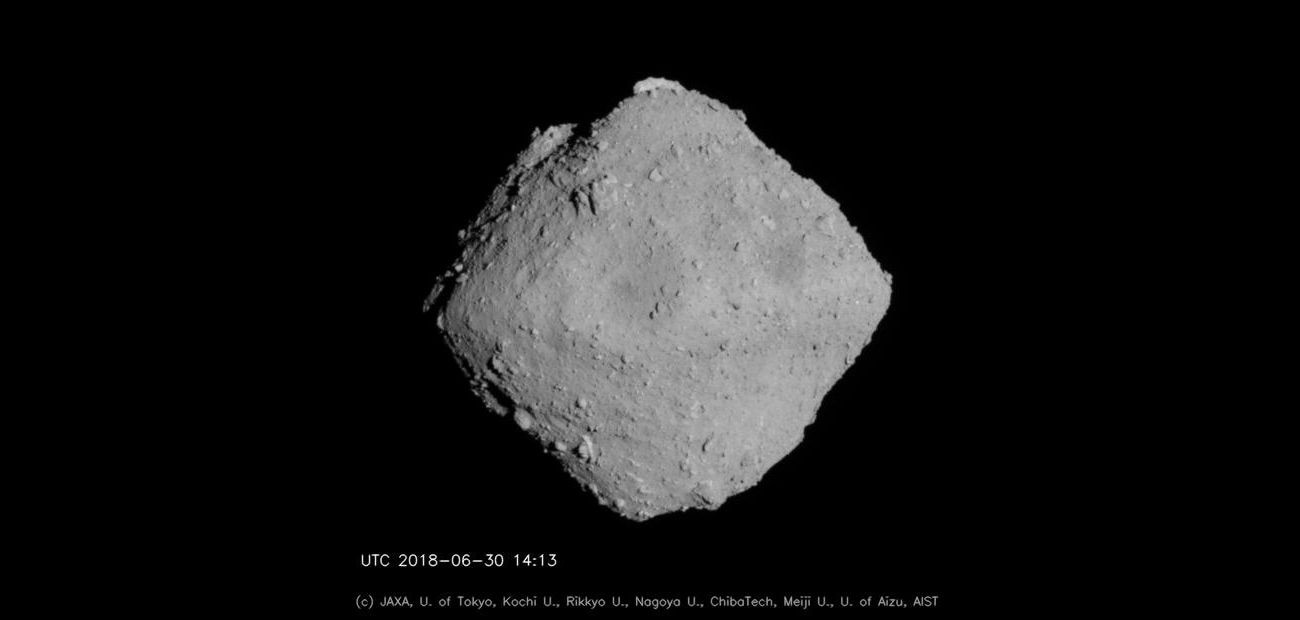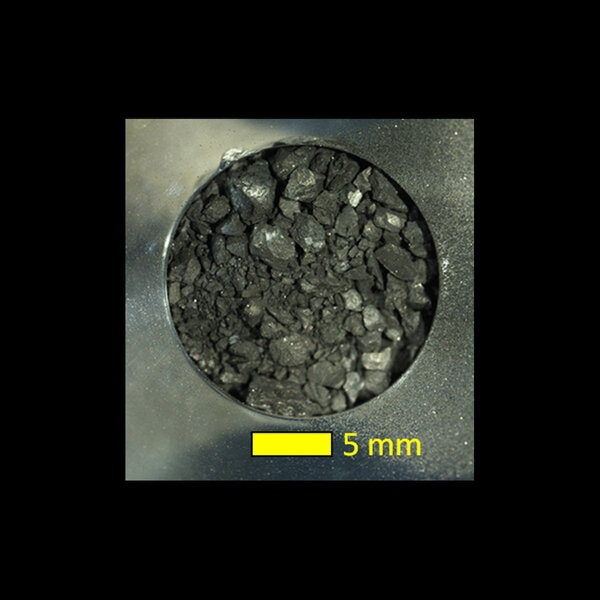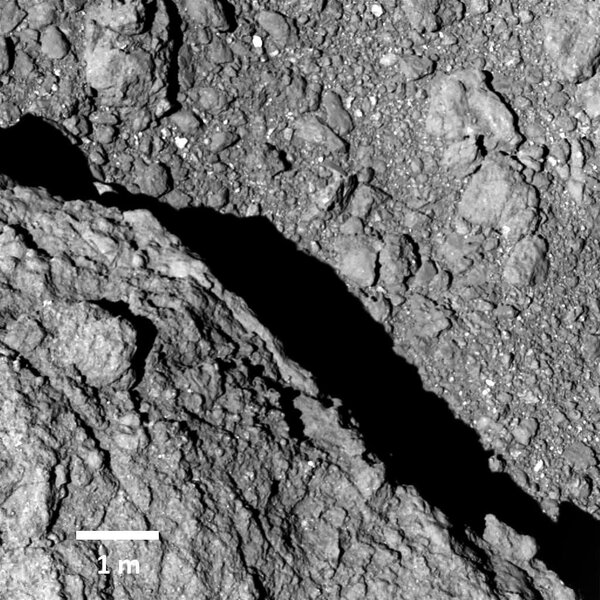Create a free profile to get unlimited access to exclusive videos, sweepstakes, and more!
Is Ryugu a dead comet masquerading as an asteroid?
The near-Earth object looks like an asteroid but may be an ice-free comet

The asteroid 162173 Ryugu was discovered in 1999, and is a near-Earth asteroid; in fact it can come so close it’s considered a potentially hazardous one, with an orbit that can technically bring it to within 100,000 kilometers of Earth. There’s no immediate risk of an impact, though.
To learn more about it, in 2018 the Japanese space mission Hayabusa2 rendezvoused with Ryugu, and what it found was weird: The 900-meter-wide rock is shaped like a spinning top, two cones attached base-to-base. It isn’t a solid monolithic chunk but instead a rubble pile, a collection of countless smaller rocks held together by gravity. It rotates rapidly, taking just 7.6 hours to spin once. Another oddity is that it’s dark, like a chunk of charcoal, and in fact the rocks seem to have an unusually high carbon content.
The going idea is that it used to be more solid, then suffered a massive collision that was strong enough to shatter it into pieces but not enough to blow all the pieces completely away. Instead, the asteroid reformed, reaccumulated all that debris. As it spun, centrifugal force caused pieces to tumble down to the equator, creating a ridge there and making Ryugu the bizarre diamond-shaped sack of rocks it is today.
That explains how it became a rubble pile, and why it has that odd shape. But the carbon content is still peculiar. We find lots of meteorites on Earth that are carbonaceous, and we think they come from asteroids after a collision breaks off pieces which then fall to Earth. But the amount of carbon in Ryugu is significantly higher than in those meteorites. Why?
New research by a team of scientists proposes it’s because Ryugu isn’t an asteroid per se. It’s a dead comet.
Comets and asteroids are very similar. Some asteroids are metallic, but most are rocky with some water ice mixed in. Comets are the opposite; mostly ices with some rock mixed in. There’s no real dividing line between the two. We somewhat arbitrarily say a comet is an object that shows activity when it gets close enough to the Sun, warming up such that the ice turns directly into a gas; a process called sublimation.
But some asteroids get so close to the Sun that even rock can vaporize and create cometary activity; the asteroid 3200 Phaethon is known to spew out material when it gets within 21 million kilometers of the Sun. Also, comets only have so much ice in them. If they’re on short orbits around the Sun, they’ll eventually lose all that ice and become “dead comets,” looking very much like asteroids.
One difference is that asteroids formed closer to the Sun, so they don’t have as much ice, while comets likely formed pretty far out, where there’s lots of ice. But there is also more organic material in the outer solar system, too, more carbon-based molecules like methanol and formaldehyde. Comets are more carbon-rich on average than asteroids.
To see if Ryugu could be a dead comet, the scientists modeled the behavior of a comet’s solid nucleus, assuming it’s a mix of ice and rock, and letting it warm to a temperature of -73°C (-100°F) [link to paper]. What they found is that even at that low temperature, in the vacuum of space ice slowly turns into a gas and leaves the comet. As it does so it leaves rocky bits behind. Over time the rocky bits compact — the ice forms a matrix in which the rocks are embedded, so when the ice goes away the rocks settle to fill in that space.
A 1-kilometer-wide comet, they found, can lose all its ice in a little as 50,000 years. What’s left behind is a rubble pile, smaller than the original comet nucleus, and rich in carbon. Bonus: As the rocks settle the nucleus spins faster. This is due to conservation of angular momentum, the same reason an ice skater’s spin will increase as they draw their arms in. Ryugu has an unusually rapid spin, so this accounts for that as well.
It’s an interesting idea. We know that comets can die, and what they leave behind certainly could look like Ryugu. We know of lots of near-Earth objects, but the percentage of them that could be dead comets is unknown, so it’s not silly to consider this a possibility.
While it was there, Hayabusa2 retrieved samples of Ryugu’s surface, about 5 grams of small bits that were dropped to Earth in December 2020 by the spacecraft as it flew by our home planet after leaving the asteroid. Or comet. Whatever. The point is that those samples are being studied now. The lab tests could help scientists understand if they look more like they come from an asteroid or a comet, and that in turn will tell us more about the environment for such rocks near Earth.
These small bodies formed when the solar system was young, and evolved over time due to sunlight, impacts, and having their orbits changed by close encounters with planets. Learning more about them tells us about the early days of our solar system. They’re time capsules.
Also, sometimes those objects hit us. In the far future Ryugu could. The more we know about their structure and composition, the better. In this case, the scientific exploration and defense of our planet go hand in hand. Either works for me, but both together? Sounds like a good idea to me.




























